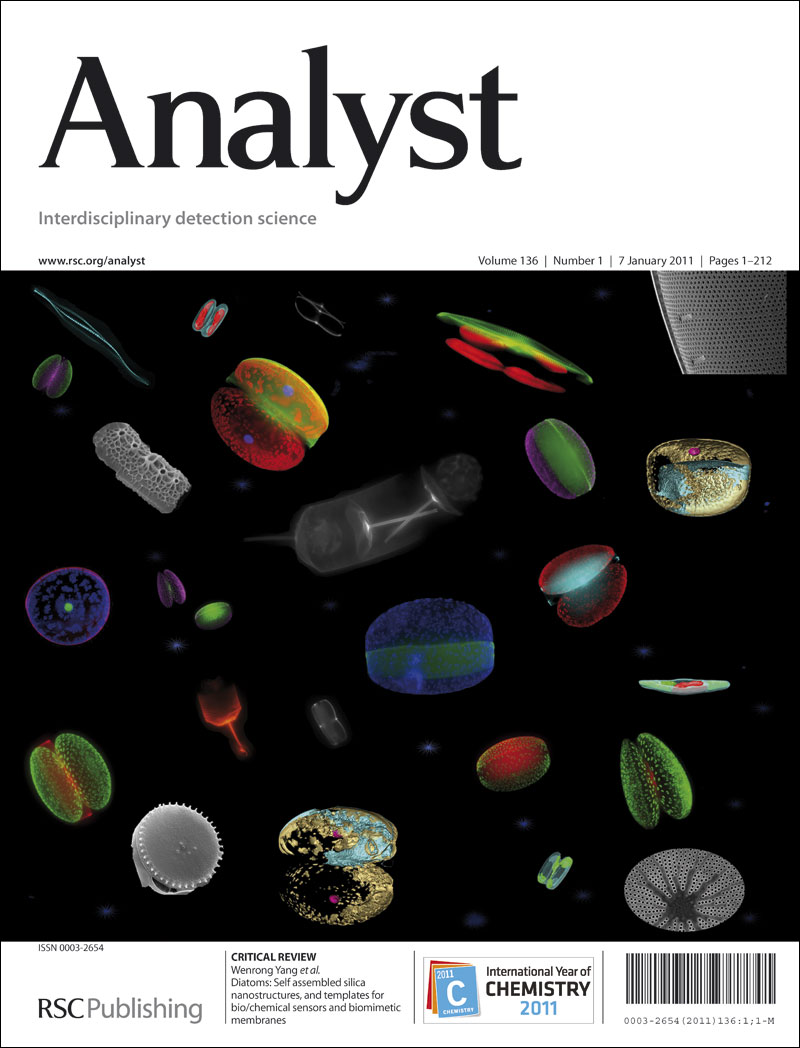Ex-vivo spectroscopic characterisation of the biological activity of pancreatic cyst fluid
IF 3.6
3区 化学
Q2 CHEMISTRY, ANALYTICAL
引用次数: 0
Abstract
Pancreatic cystic lesions (PCLs) are fluid-filled sacs often detected incidentally through abdominal imaging. While most PCLs are benign with no risk of progressing to pancreatic cancer (PC), a subset can undergo malignant transformation. Differentiating these benign lesions from those that pose a cancer risk remains challenging as current imaging methods and clinical guidelines lack sufficient specificity. Moreover, understanding the biological mechanisms underlying PCL development and progression is critical for optimizing patient management. Well-established PC cell lines and pancreatic cyst fluid (PCF)—the fluid within PCLs—offer valuable tools for studying how PCLs form and potentially transform into malignancies. Insights gained from such investigations could substantially refine patient risk stratification, helping to avoid unnecessary surveillance or treatment. Vibrational spectroscopy represents a promising adjunct to traditional diagnostic techniques, providing objective analysis of PCF and potential in-vivo applications. In this ex-vivo study, we developed a cell-line-based model coupled with vibrational spectroscopy to distinguish how PC cell lines respond to PCF exposure. Our findings demonstrate a robust assay that, with further refinement, may predict disease trajectory and guide precision medicine strategies for patients with PCLs.胰腺囊肿液生物活性的离体光谱表征
胰腺囊性病变(PCLs)是一种充满液体的囊,通常通过腹部成像偶然发现。虽然大多数pcl是良性的,没有进展为胰腺癌(PC)的风险,但一个子集可以发生恶性转化。由于目前的成像方法和临床指南缺乏足够的特异性,将这些良性病变与具有癌症风险的病变区分开来仍然具有挑战性。此外,了解PCL发展和进展的生物学机制对于优化患者管理至关重要。成熟的PC细胞系和胰腺囊肿液(PCF) - pcl内的液体-为研究pcl如何形成和潜在转化为恶性肿瘤提供了有价值的工具。从这些调查中获得的见解可以大大改善患者的风险分层,有助于避免不必要的监测或治疗。振动光谱学是传统诊断技术的一个很有前途的辅助手段,提供了PCF的客观分析和潜在的体内应用。在这项离体研究中,我们开发了一种基于细胞系的模型,结合振动光谱来区分PC细胞系对PCF暴露的反应。我们的研究结果证明了一种强大的检测方法,通过进一步的改进,可以预测疾病轨迹并指导pcl患者的精准医疗策略。
本文章由计算机程序翻译,如有差异,请以英文原文为准。
求助全文
约1分钟内获得全文
求助全文
来源期刊

Analyst
化学-分析化学
CiteScore
7.80
自引率
4.80%
发文量
636
审稿时长
1.9 months
期刊介绍:
"Analyst" journal is the home of premier fundamental discoveries, inventions and applications in the analytical and bioanalytical sciences.
 求助内容:
求助内容: 应助结果提醒方式:
应助结果提醒方式:


